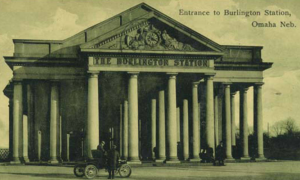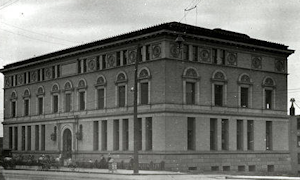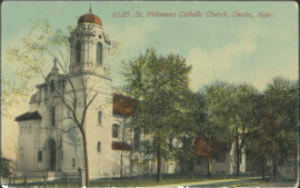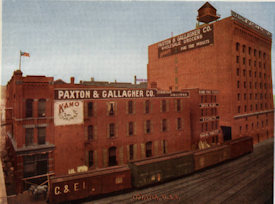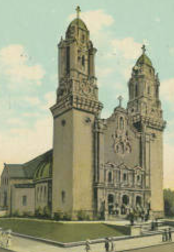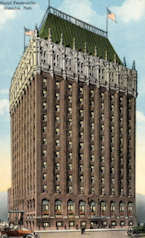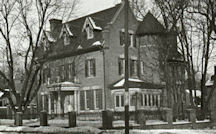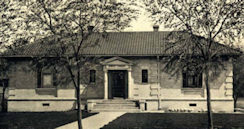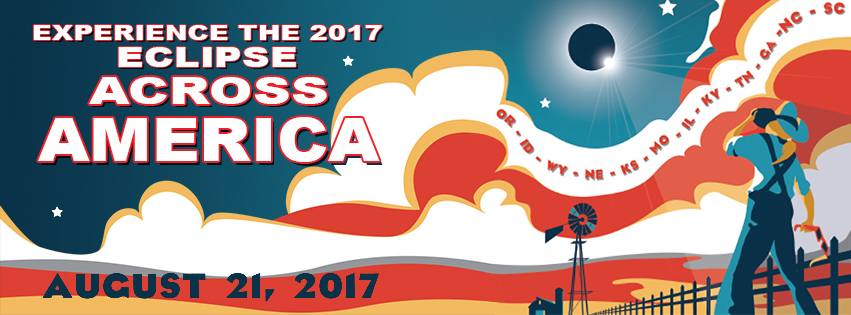Search the Blog
Categories
- Books & Reading
- Broadband Buzz
- Census
- Education & Training
- General
- Grants
- Information Resources
- Library Management
- Nebraska Center for the Book
- Nebraska Libraries on the Web
- Nebraska Memories
- Now hiring @ your library
- Preservation
- Pretty Sweet Tech
- Programming
- Public Library Boards of Trustees
- Public Relations
- Talking Book & Braille Service (TBBS)
- Technology
- Uncategorized
- What's Up Doc / Govdocs
- Youth Services
Archives
Subscribe
Category Archives: Technology
The Undivided Back
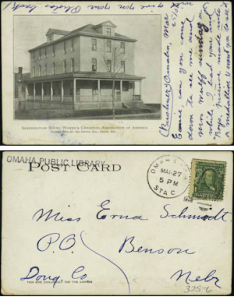 When looking at old postcards in Nebraska Memories have you noticed that some of them have writing on the front of the card or that there is a lot of white space around the picture on the postcard? This may be because in the early days people were not allowed to write a message on the back of the postcard next to the address.
When looking at old postcards in Nebraska Memories have you noticed that some of them have writing on the front of the card or that there is a lot of white space around the picture on the postcard? This may be because in the early days people were not allowed to write a message on the back of the postcard next to the address.
The Smithsonian Institution provides a nice history of postcards starting in 1861 when the US Congress passed an act that allowed privately printed cards to be sent in the mail.
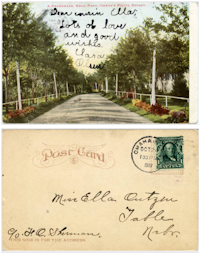 Later legislation passed in 1873 allowed the government to produce postcards with a message on one side and an address on the other side. These government postcards could be mailed for 1¢ however privately created postcards cost 2¢ to mail. In 1898 the prices were changeed so all postcards required just a 1¢ stamp. Other laws were enacted between 1898 and 1906 that changed the requirements on what information must be printed on the back of a postcard however; people were still not allowed to write a message on the back of the card next to the address.
Later legislation passed in 1873 allowed the government to produce postcards with a message on one side and an address on the other side. These government postcards could be mailed for 1¢ however privately created postcards cost 2¢ to mail. In 1898 the prices were changeed so all postcards required just a 1¢ stamp. Other laws were enacted between 1898 and 1906 that changed the requirements on what information must be printed on the back of a postcard however; people were still not allowed to write a message on the back of the card next to the address.
Americans were finally allowed to write on the backside of the postcards in 1907. According to the 1906 Post-Office Department Annual Reports for the Fiscal Year ended June 30, 1906, this change came about after the meeting of the Universal Postal Union that took place in Rome. After a bit of research, I learned that Universal Postal Union (UPU) is the international organization that sets the rules for international mail exchange. The UPU was established in 1874.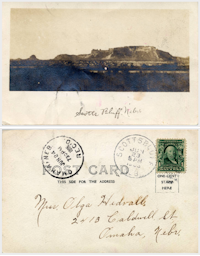
The change to allow writing on both sides of the card came about because of public request. Folks did not want to write a message on or next to the images on the front side of the cards. European countries were the first to make this change. Starting on October 31, 1906 the US Post Office started allowing postcards mailed from foreign countries to be delivered in the US with writing on the back. On March 1, 1907, the US Post Office allowed postcards mailed domestically to have written messages on the left side of the card next to the address. If you read the original text in the 1906 US Post Office report, you will see that they refer to the side of the postcard that contains the address to be the front of the postcard.
This period between 1901 and 1907, when folks were not allowed to write on the back of the postcard has become known as the Undivided Back Period. All of the postcards included in this post are from Nebraska Memories and examples from the Undivided Back Period. Looking at the back of these postcards, you will see that all of them contain a printed message that makes it clear that the only thing that can be put on the back of the postcard is the address.
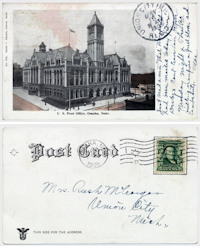 Visit Nebraska Memories to search for or browse through many more historical images digitized from photographs, negatives, postcards, maps, lantern slides, books and other materials.
Visit Nebraska Memories to search for or browse through many more historical images digitized from photographs, negatives, postcards, maps, lantern slides, books and other materials.
Nebraska Memories is a cooperative project to digitize Nebraska-related historical and cultural heritage materials and make them available to researchers of all ages via the Internet. Nebraska Memories is brought to you by the Nebraska Library Commission. If your institution is interested in participating in Nebraska Memories, see http://nlc.nebraska.gov/nebraskamemories/participation.aspx for more information, contact Devra Dragos, Technology & Access Services Director.
2017 Solar Eclipse–One Week From Today!
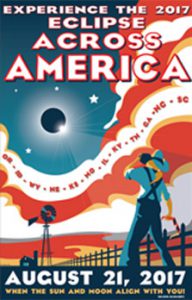 The solar event of the century is only a little over 6 days away–the 2017 Total Eclipse!
The solar event of the century is only a little over 6 days away–the 2017 Total Eclipse!
Just as a last blog post about the Eclipse before the big day, I wanted to point out an awesome video that I came across this past weekend.
One of the best, because it’s Nebraska specific, is the “movie trailer” below, produced by the Hyde Memorial Observatory in Lincoln:
So enjoy, have fun, and be safe!
New Public Library Toolkit for Consumer Health Information Resources
 The McGoogan Library of Medicine at University of Nebraska Medical Center has created a new Public Library Toolkit to support Nebraska public librarians in delivering consumer health information to their communities. The toolkit provides links to training resources for librarians, and state and local health statistics to help with program planning. It also provides websites for consumers that cover health and wellness, finding healthcare, financial assistance, and caregiver support.
The McGoogan Library of Medicine at University of Nebraska Medical Center has created a new Public Library Toolkit to support Nebraska public librarians in delivering consumer health information to their communities. The toolkit provides links to training resources for librarians, and state and local health statistics to help with program planning. It also provides websites for consumers that cover health and wellness, finding healthcare, financial assistance, and caregiver support.
McGoogan Library has been serving the consumer health information needs of Nebraska citizens for over 30 years. The library continues to seek opportunities to support and collaborate with public libraries. If you have feedback or suggestions for the toolkit, please contact Christian Minter, Community Engagement & Health Literacy Librarian at christian.minter@unmc.edu or 402-559-7226.
Nebraska Hall of Fame Newest Inductee Selected
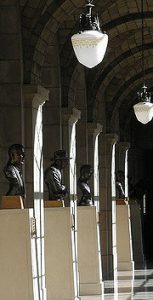 On August 2, 2017, the Nebraska Hall of Fame Commission selected Thomas Rogers Kimball, a Nebraska architect, as its newest inductee. The Nebraska Hall of Fame was established in 1961 to recognize prominent Nebraskans. As of 1998, only one person is added to the Hall of Fame every five years. Busts of Hall of Fame members are placed in the Nebraska State Capitol. An induction ceremony for Kimball will be planned in 2019.
On August 2, 2017, the Nebraska Hall of Fame Commission selected Thomas Rogers Kimball, a Nebraska architect, as its newest inductee. The Nebraska Hall of Fame was established in 1961 to recognize prominent Nebraskans. As of 1998, only one person is added to the Hall of Fame every five years. Busts of Hall of Fame members are placed in the Nebraska State Capitol. An induction ceremony for Kimball will be planned in 2019.
Thomas Rogers Kimball was born in Ohio in 1862 but moved to Omaha with his family when he was in his early teens. Kimball studied at the University of Nebraska then went on to study architecture at the Massachusetts Institute of Technology. In 1891, Kimball returned to Omaha and opened an office.
Kimball designed numerous buildings, many of which are still in use today. In Nebraska Memories, there are images of fourteen different buildings that Thomas Rogers Kimball designed. Here are few of the buildings you may recognize.
In addition to designing buildings, Kimball also served as an architectural adviser on numerous projects both in Nebraska and in other states. The two most notable projects in Nebraska included the Trans-Mississippi Exposition and the State Capitol. Rogers along with C. Howard Walker were co-architects-in-chief of the Trans-Mississippi Exposition and designed a few of the buildings. Kimball also served as an architectural advisor for Nebraska State Capitol Commission. He was involved in organizing the competition that lead to the design of the current Capitol.
Thomas Rogers Kimball died in September 1934 just after the Nebraska State Capitol was completed.
Visit Nebraska Memories to search for or browse through many more historical images digitized from photographs, negatives, postcards, maps, lantern slides, books and other materials.
Nebraska Memories is a cooperative project to digitize Nebraska-related historical and cultural heritage materials and make them available to researchers of all ages via the Internet. Nebraska Memories is brought to you by the Nebraska Library Commission. If your institution is interested in participating in Nebraska Memories, see http://nlc.nebraska.gov/nebraskamemories/participation.aspx for more information, contact Devra Dragos, Technology & Access Services Director.
Posted in Nebraska Memories, Technology
Leave a comment
Nebraska Libraries Encouraged to Apply for “Libraries Ready to Code” Grants
ALA opens application period for Libraries Ready to Code grants
The American Library Association (ALA) has opened the application period for grants to develop public and school library programming that promotes computer science (CS) and computational thinking (CT) among youth. 25-50 libraries will be selected to receive grants of up to $25,000 to design and implement youth coding programs that incorporate Ready to Code concepts. The Ready to Code project team will host an informational webinar on Tuesday, August 1, to supplement the detailed RFP and provide additional guidance to applicants. Interested applicants can RSVP to participate in the webinar at the RtC website. Proposal deadline is August 31, 2017,
The grant opportunity is the latest phase of the Libraries Ready to Code (RtC) initiative of ALA’s Office for Information Technology Policy (OITP), sponsored by Google. For more information:
http://www.ala.org/news/press-releases/2017/07/ala-opens-application-period-libraries-ready-code-grants
Posted in Education & Training, General, Grants, Programming, Technology
Leave a comment
Internet Librarian Conference (October 23-25) Discount
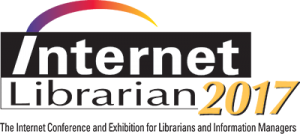 The Nebraska Library Commission is offering a group discount to all librarians in Nebraska who attend the 2017 Internet Librarian Conference. This year it will be held at the Monterey Marriott in Monterey, California, on October 23-25, 2017. Detailed information about the conference can be found on the conference web page at http://internet-librarian.infotoday.com/2017/
The Nebraska Library Commission is offering a group discount to all librarians in Nebraska who attend the 2017 Internet Librarian Conference. This year it will be held at the Monterey Marriott in Monterey, California, on October 23-25, 2017. Detailed information about the conference can be found on the conference web page at http://internet-librarian.infotoday.com/2017/
The price of the conference with the discount is $389 for the three-day event (regular rate is $549). That’s a $160 savings! In the past, no discount rates were available for the preconference workshops. This year, however, there is a Gold Pass available to groups at the discounted rate of $649 (regularly $789). (No discount rates are available for the separately priced preconference workshops.) In addition, the discount rate of $119 (regularly $209) on the Internet@Schools Track is also available.
To receive the discount you will need to register online using this link. Discounted rates should appear on the registration form. If you don’t see discounted rates on the form, please contact Susan Knisely for assistance. Online registrations can be made until September 22 to receive the discounted rates.
Posted in Education & Training, Technology
Leave a comment
A Fresh Perspective
Nebraska Memories contains thousands of images. Many of these images show buildings and street scenes from across the state. When the metadata that accompanies these images includes an address I like to find the location on a map. Finding the location on an online map is easy but since so many of the buildings have changed over the past 100+ years I don’t always find it helpful. When I saw the Library of Congress’s (LOC) announcement that they were providing access to nearly 25,000 Sanborn Fire Insurance Maps I was thrilled. At this time, the maps from sixteen states are available. Lucky for us one of those states in Nebraska. Currently all of the maps available were published prior to 1900.
If you’ve never seen a Sanborn Fire Insurance Map before they may seem a bit odd the first time you look at one. As the name implies, these maps were created for assessing fire insurance liability. On the maps, you will see the outline of buildings along with information about building materials, the number of doors and windows and the amount of hose available. If you need help understanding all of the abbreviations and symbols on the map like I did, I’d suggest you look at the LOC’s About this Collection page.
I started exploring the Sanborn maps by first picking a few photos in Nebraska Memories and then trying to locate them on one of the maps. As I looked at different places on the map, I realized how much information was available. That information combine with seeing how a building related to other structures around it provided me with a fresh perspective of images I’ve viewed multiple times.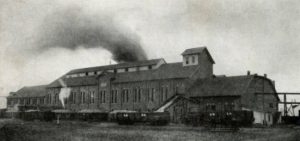
One photo that I selected was the Beet sugar factory, Grand Island, Neb. On the photo, note the two raised sections on the roof and the smoke that is rising from behind the building.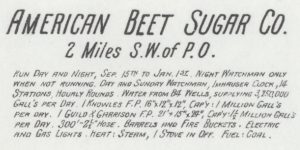 Now let’s look at the 1899 Sanborn Fire Insurance Map from Grand Island, Hall County, Nebraska. I found the American Beet Sugar Co. located on image 18 of the map. Under the name, it says, “2 Miles S. W. of P.O.”. The P.O. as you may have guessed stands for post office. I’ve included a screen shot of paragraph of information available on the map. As you read it, remember these are fire insurance maps.
Now let’s look at the 1899 Sanborn Fire Insurance Map from Grand Island, Hall County, Nebraska. I found the American Beet Sugar Co. located on image 18 of the map. Under the name, it says, “2 Miles S. W. of P.O.”. The P.O. as you may have guessed stands for post office. I’ve included a screen shot of paragraph of information available on the map. As you read it, remember these are fire insurance maps.
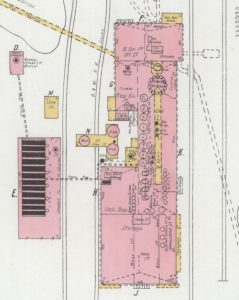 On the drawing of the building, do you see the yellow square with the long yellow rectangle below it? It looks like a yellow i in the middle of the building. If you zoom in on the original map image you can see the words “Tank on R’F.” next to the square and “Vent in R’F” next to the rectangle. Now look to the left of the main building and find the building with the think black lines and small circles. The black lines represent steam boilers. The circles are iron chimneys. The circle with the black dot in the middle is the fire pump. I’m assuming the smoke or steam that we see in the picture is coming from this building. Taking these three pieces of information and comparing it to the photo, I would guess this picture shows the east side of the factory. Looking at the map, you will see other features of the factory such as the “underground sluice” that connects the beet shed to the main building and the “Molasses Reservoir (underground) Wood Cover”. These maps were drawn to scale so we can see that the reservoir is huge. Other areas I noticed include washers, brushes, slicing machine, granulator, press room and lime slackers.
On the drawing of the building, do you see the yellow square with the long yellow rectangle below it? It looks like a yellow i in the middle of the building. If you zoom in on the original map image you can see the words “Tank on R’F.” next to the square and “Vent in R’F” next to the rectangle. Now look to the left of the main building and find the building with the think black lines and small circles. The black lines represent steam boilers. The circles are iron chimneys. The circle with the black dot in the middle is the fire pump. I’m assuming the smoke or steam that we see in the picture is coming from this building. Taking these three pieces of information and comparing it to the photo, I would guess this picture shows the east side of the factory. Looking at the map, you will see other features of the factory such as the “underground sluice” that connects the beet shed to the main building and the “Molasses Reservoir (underground) Wood Cover”. These maps were drawn to scale so we can see that the reservoir is huge. Other areas I noticed include washers, brushes, slicing machine, granulator, press room and lime slackers.
Next, I located the Union College campus on image 47 of the 1891 Sanborn Fire Insurance Map from Lincoln, Lancaster County, Nebraska. The Union College, Ella Johnson Crandall Memorial Library has a collection of 100+ images in Nebraska Memories so I knew there were many photos available.
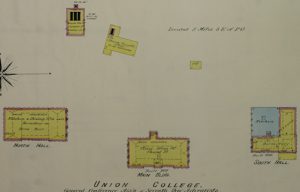 When you look at this map or any of the Sanborn maps, make sure you look for the compass rose on the map and locate north. At first I had assumed the top of the map was north but quickly learned that is not always true. The location of north can even change from one image to the next. If you look at the full version of the Union College map, you will see that north is to the left.
When you look at this map or any of the Sanborn maps, make sure you look for the compass rose on the map and locate north. At first I had assumed the top of the map was north but quickly learned that is not always true. The location of north can even change from one image to the next. If you look at the full version of the Union College map, you will see that north is to the left.
The map shows five buildings located on campus. There are images of the three largest building in Nebraska Memories. Because these three buildings have been torn down, this map gives us a better perspective on exactly where they were located in relationship to each other. Remember that these maps are drawn to scale.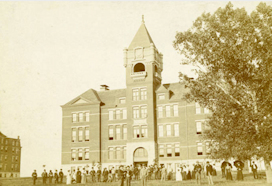
- Main Building or the Administration Building – It is located at the bottom center of the map. It’s noted on the map that it was built in 1891.
- North Hall – This building is located to the left or north of the admin building. A note on the map states that this hall is currently being built.
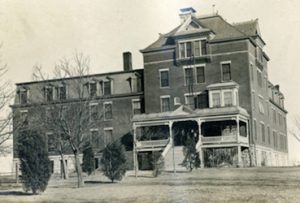
- South Hall – As you can guess, this building is to the right or south of the admin building. The map also notes that this building was built in 1891.
At the top left of the map is a building that is labeled “Bolier R’m 1st Laundry 2d” with the note “To Be Built as Shown”. There are two photos of the Union College laundry building in Nebraska Memories but the photos are from the 1940’s. I don’t have enough information to know if the building in the photo is the same building that is pictured on the map.
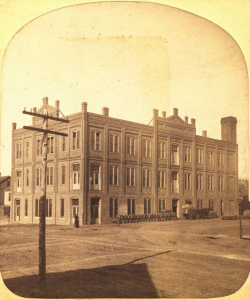 In the 1887 Sanborn Fire Insurance Map from Omaha, Douglas And Sarpy County, Nebraska I located the Garneau Cracker Factory on image 20. This building was located on the northwest corner of 12th and Jackson St. While it was interesting looking at the building and learning that they did the mixing on the 3rd floor and baking on the 2nd what really caught my eye was the last line in the blurb about the building. The line states “1 Doz. Hand Grenades”.
In the 1887 Sanborn Fire Insurance Map from Omaha, Douglas And Sarpy County, Nebraska I located the Garneau Cracker Factory on image 20. This building was located on the northwest corner of 12th and Jackson St. While it was interesting looking at the building and learning that they did the mixing on the 3rd floor and baking on the 2nd what really caught my eye was the last line in the blurb about the building. The line states “1 Doz. Hand Grenades”. 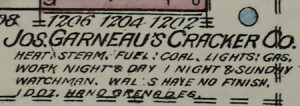 I must admit that I had to stop and think about that one for a few seconds until I remembered that this is a fire insurance map. Those hand grenades were actually fire extinguishers. They were glass containers that were filled with a chemical. You were supposed to throw them at the fire causing the glass to break and releasing the chemical. If you would like to know more about them, I found a newspaper story in the 1884 Pacific Rural Press that includes a picture and description.
I must admit that I had to stop and think about that one for a few seconds until I remembered that this is a fire insurance map. Those hand grenades were actually fire extinguishers. They were glass containers that were filled with a chemical. You were supposed to throw them at the fire causing the glass to break and releasing the chemical. If you would like to know more about them, I found a newspaper story in the 1884 Pacific Rural Press that includes a picture and description.
 I must admit that not all of my attempts to locate buildings on a map were instantly successful. For example, the Cheyenne County Historical Society and Museum has a collection of 77 images in Nebraska Memories that cover a large span of time. In the LOC collection, there are two Sanborn maps for Sidney. One is from 1887 and the other is from 1892. Unfortunately, many of the buildings are not labeled with store names. I was able to find the First Sidney school on image 2 of the 1887 map. It’s located at the corner of 1st St. and Chestnut.
I must admit that not all of my attempts to locate buildings on a map were instantly successful. For example, the Cheyenne County Historical Society and Museum has a collection of 77 images in Nebraska Memories that cover a large span of time. In the LOC collection, there are two Sanborn maps for Sidney. One is from 1887 and the other is from 1892. Unfortunately, many of the buildings are not labeled with store names. I was able to find the First Sidney school on image 2 of the 1887 map. It’s located at the corner of 1st St. and Chestnut.
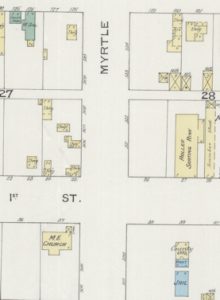 After looking at the Sanborn maps and a current map of Sidney, I’m starting to wonder if the street names have been changed. For example, the note included on the photo of the M.E. Church, Sidney, Nebr. states, “This church, built in 1919, replaced the Methodist Church built in 1884 on the same spot.” The record also states that the church is located at corner of 11th and Jackson Streets and currently is the Sidney Arts Center. I looked at a current map and was able to find the building located across the street from the county court house. On image 2 of the 1887 Sanborn Fire Insurance Map from Sidney, Cheyenne County, Nebraska I located a building labeled “M.E Church” that was also located across the street from a building labeled “County Offs.” These buildings were located at the corner of 1st St. and Myrtle. If I’m correct, that means 1st St. on the Sanborn maps is now Jackson St. and Myrtle is now 11th Ave. With a bit more work, I’m sure it would be possible to match more of the photos with buildings on the map.
After looking at the Sanborn maps and a current map of Sidney, I’m starting to wonder if the street names have been changed. For example, the note included on the photo of the M.E. Church, Sidney, Nebr. states, “This church, built in 1919, replaced the Methodist Church built in 1884 on the same spot.” The record also states that the church is located at corner of 11th and Jackson Streets and currently is the Sidney Arts Center. I looked at a current map and was able to find the building located across the street from the county court house. On image 2 of the 1887 Sanborn Fire Insurance Map from Sidney, Cheyenne County, Nebraska I located a building labeled “M.E Church” that was also located across the street from a building labeled “County Offs.” These buildings were located at the corner of 1st St. and Myrtle. If I’m correct, that means 1st St. on the Sanborn maps is now Jackson St. and Myrtle is now 11th Ave. With a bit more work, I’m sure it would be possible to match more of the photos with buildings on the map.
 I hope you enjoyed viewing these historical images, along with additional information available on the historical Sanborn maps. If you would like to do your own research there are plenty more images in Nebraska Memories and a long list of Nebraska Sanborn maps.
I hope you enjoyed viewing these historical images, along with additional information available on the historical Sanborn maps. If you would like to do your own research there are plenty more images in Nebraska Memories and a long list of Nebraska Sanborn maps.
Nebraska Memories is a cooperative project to digitize Nebraska-related historical and cultural heritage materials and make them available to researchers of all ages via the Internet. Nebraska Memories is brought to you by the Nebraska Library Commission. If your institution is interested in participating in Nebraska Memories, see http://nlc.nebraska.gov/nebraskamemories/participation.aspx for more information, contact Devra Dragos, Technology & Access Services Director.
Posted in Information Resources, Nebraska Memories, Technology
2 Comments
Solar Eclipse Resources Part Two: 54 Days and Counting…
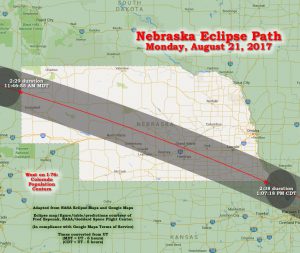 …or 7 weeks, 5 days, 23 hrs, and 14 mins, depending on when you read this of course!
…or 7 weeks, 5 days, 23 hrs, and 14 mins, depending on when you read this of course!
Is your library ready for the celestial event of the century? In 54 days, on August 21, 2017, the shadow of the moon will sweep across the United States from the Pacific Ocean to the Atlantic Ocean in a spectacle that hasn’t occurred in decades. In fact, the last total solar eclipse for the United States was nearly 40 years ago, and the next total eclipse that will be visible in the continental United States will be in 2024. Did you know that Nebraska will be one of the BEST places in the country to view it?
To help your library prepare for this historic event, the Nebraska Library Commission is doing a series of blog posts about resources you can access for your Eclipse programs:
Part 2: Educational Resources
Books & Articles: This section has a great eclipse bibliography for libraries, plus some of the best eclipse related books and articles available for download or purchase: The “All-American” Eclipse: A Guide for Public Libraries and Their Communities, When The Sun Goes Dark: A New, Richly-illustrated Children’s Book on the Science and Fun of Eclipses are just two suggested books available.
Eclipse Videos: In this section, you will find educational videos to educate your library patrons about the 2017 eclipse, courtesy of Exploratorium and Sky & Telescope (each of which has their own great resources). Examples of some of the videos: What is a Solar Eclipse (in English and Spanish), Earth-Sun-Moon Scale Model, and Getting to the 2017 Total Solar Eclipse.
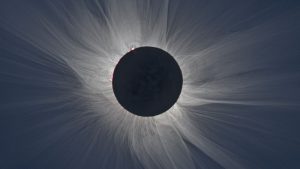 Eclipse Websites: There are a wide variety of really cool websites in this section! NASA, the National Science Teachers Association, the Fiske Planetarium, the Great American Eclipse, and STARnet to name just a few.
Eclipse Websites: There are a wide variety of really cool websites in this section! NASA, the National Science Teachers Association, the Fiske Planetarium, the Great American Eclipse, and STARnet to name just a few.
Have fun checking out all the resources available, and stay tuned next week for Solar Eclipse Resources Part Three!
E-rate Program Summer Webinars
 From USAC Training & Outreach:
From USAC Training & Outreach:
Join USAC for our live training webinars for E-rate Program participants. We will share program updates and essential guidance to help participants learn about and successfully navigate the program. During each webinar, the audience will have the opportunity to take part in a live question and answer session with members of the Schools and Libraries (E-rate) Program team.
Summer Webinar Schedule
To register, click on the “Register Now” buttons below, complete the registration form, and click “Submit.” You can add a reminder to your calendar by clicking the “Add to Calendar” button on that page. You will then receive a confirmation email with instructions for joining the webinar.
If you can’t attend the live presentations, register for the webinars and we’ll send you a link to the recording afterwards. The recordings will also be posted in the Online Learning Library.
How to File FCC Form 486 – Tuesday, June 20 – 2:00pm CT Register Now!
This webinar will provide a walkthrough of the FCC Form 486. We will discuss the purpose of the form, review Children’s Internet Protection Act (CIPA) requirements, and provide guidance on how to prepare and file the form.
How to File FCC Form 470 – Tuesday, July 18 – 2:00pm CT Register Now!
This webinar will provide a walkthrough of the Funding Year 2018 FCC Form 470. We will discuss the purpose of the form, review competitive bidding requirements, and provide guidance on how to prepare and file the form.
E-rate Training for Beginners – Tuesday, August 15 – 2:00pm CT Register Now!
This webinar is tailored for new E-rate participants or anyone who needs a refresher on basic program information.
Equipment and Set-Up
To participate in these webinars, you’ll need the following:
- Minimum system requirements You can also click the “FAQs and System Test” button on the event’s registration page to determine whether your computer meets the requirements to see and hear the webinar.
- A computer or mobile device with an internet connection
- Computer speakers or headset
Posted in Education & Training, Technology
Leave a comment
Solar Eclipse Countdown: 71 Days and Counting…Part 1
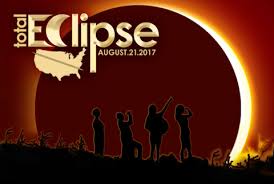 Is your library ready for the celestial event of the century? In 10 weeks, on August 21, 2017, the shadow of the moon will sweep across the United States from the Pacific Ocean to the Atlantic Ocean in a spectacle that hasn’t occurred in decades. In fact, the last total solar eclipse for the United States was nearly 40 years ago, and the next total eclipse that will be visible in the continental United States will be in 2024.
Is your library ready for the celestial event of the century? In 10 weeks, on August 21, 2017, the shadow of the moon will sweep across the United States from the Pacific Ocean to the Atlantic Ocean in a spectacle that hasn’t occurred in decades. In fact, the last total solar eclipse for the United States was nearly 40 years ago, and the next total eclipse that will be visible in the continental United States will be in 2024.
To help your library prepare for this historic event, the Nebraska Library Commission is doing a series of blog posts about resources you can access for your Eclipse programs:
Part 1:
Media Toolkits, where you will find a variety of resources to assist your library in developing educational and promotional materials.
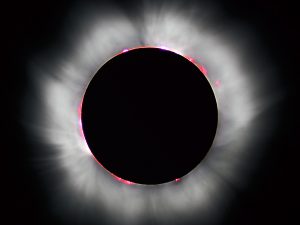
In Images and Videos, you will find lots of pictures for viewing, downloading, and printing out for display. There are also a variety of short clip videos for viewing, downloading, and showing during a program or event.
 In Downloadables there are posters of various sizes that you can print out for displays.
In Downloadables there are posters of various sizes that you can print out for displays.
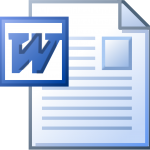
And in Media Templates there are Word templates that your library can use to promote your eclipse event to your community: Press Release, Public Service Announcement, Community Letter, and Media Alert.
Just a few things to help get you started with planning library programs for Total Eclipse 2017! Stay tuned for Part 2!
Libraries Invited to Apply for Rotating Makerspace
 Nebraska public libraries are invited to apply to host rotating makerspaces as part of the Library Innovation Studios: Transforming Rural Communities project. The Nebraska Library Commission along with partners University of Nebraska—Lincoln, Nebraska Innovation Studio, Nebraska Extension, and Regional Library Systems, are excited about the project, which was recently awarded a National Leadership Grant of $530,732 by the Institute of Museum and Library Services (IMLS). The project, which will begin July 1, 2017 and conclude June 30, 2020, uses Library Innovation Studios (makerspaces) hosted by thirty public libraries to support community engagement and participatory learning experiences by providing access to technological and innovative learning tools not readily accessible locally. This strengthening of the maker culture in Nebraska communities is expected to stimulate creativity, innovation, and idea exchange to facilitate entrepreneurship, skill development, and local economic development.
Nebraska public libraries are invited to apply to host rotating makerspaces as part of the Library Innovation Studios: Transforming Rural Communities project. The Nebraska Library Commission along with partners University of Nebraska—Lincoln, Nebraska Innovation Studio, Nebraska Extension, and Regional Library Systems, are excited about the project, which was recently awarded a National Leadership Grant of $530,732 by the Institute of Museum and Library Services (IMLS). The project, which will begin July 1, 2017 and conclude June 30, 2020, uses Library Innovation Studios (makerspaces) hosted by thirty public libraries to support community engagement and participatory learning experiences by providing access to technological and innovative learning tools not readily accessible locally. This strengthening of the maker culture in Nebraska communities is expected to stimulate creativity, innovation, and idea exchange to facilitate entrepreneurship, skill development, and local economic development.
Accredited Nebraska public libraries with a legal service area of less than 25,000 are eligible to apply. The deadline for the first application cycle—to identify twelve to twenty participating libraries—is July 10, 2017. The balance of the participating libraries are expected to be selected in an application process sometime in 2018. For more information see http://nlc.nebraska.gov/grants/InnovationStudios/ or watch the recorded NCompass Live webinar at http://nlc.nebraska.gov/scripts/calendar/eventshow.asp?ProgId=16370.
Posted in Education & Training, General, Grants, Programming, Technology
Leave a comment
NCompass Live: The Purrfect Solution: LibraryThing’s TinyCat for Small Libraries
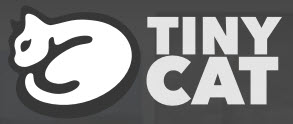 Join us for the next NCompass Live, ‘The Purrfect Solution: LibraryThing’s TinyCat for Small Libraries’, on Wednesday, June 14, 10:00am – 11:00am CT.
Join us for the next NCompass Live, ‘The Purrfect Solution: LibraryThing’s TinyCat for Small Libraries’, on Wednesday, June 14, 10:00am – 11:00am CT.
LibraryThing presents TinyCat, its new, mobile-friendly solution for small libraries. TinyCat is a full-fledged OPAC for small libraries, with the look and features of high-priced systems, at a price every school, church and other community organization can afford.
Hundreds of other libraries are calling TinyCat “simple”, “very easy,”, and “a lifesaver!” TinyCat builds on LibraryThing, a long-running and much-beloved social cataloging for book lovers and small organizations. So it’s easy to use for librarians and non-librarians alike.
Come explore everything TinyCat has to offer, from handy search tools and fun sharing options to features for tracking your circulation and patrons.
Presenters: Tim Spalding, Founder and CEO of LibraryThing, and Kristi Kennedy, TinyCat Support Specialist.
About LibraryThing: LibraryThing is a leader in social networking for readers and in software for libraries. LibraryThing.com counts over 2 million members who have cataloged nearly 115 million books. In addition to TinyCat, LibraryThing also offers libraries a suite of catalog enhancements through LibraryThing for Libraries. Learn more at LibraryThing.com and LibraryThing.com/forlibraries.
About TinyCat: TinyCat is the online catalog for tiny libraries. With free 30-day trials, affordable pricing, and online tutorials, adopting your own TinyCat has never been easier. Visit librarycat.org or email tinycat@librarything.com to learn more.
Upcoming NCompass Live events:
- June 21 – Feelings are Messy: Building Emotional Intelligence in Libraryland
- June 28 – The New NLA Intellectual Freedom Manual Comes to the Rescue
- July 5 – PubMed, PubMed Central, MEDLINE, MedlinePlus…
- July 12 – From Collections to Commons: How we turned stacks to student spaces at UNL
- July 19 – Finding Your Focus: Tips for Early Career Success
For more information, to register for NCompass Live, or to listen to recordings of past events, go to the NCompass Live webpage.
NCompass Live is broadcast live every Wednesday from 10am – 11am Central Time. Convert to your time zone on the Official U.S. Time website. The show is presented online using the GoToWebinar online meeting service. Before you attend a session, please see the NLC Online Sessions webpage for detailed information about GoToWebinar, including system requirements, firewall permissions, and equipment requirements for computer speakers and microphones.
NCompass Live: Library Innovation Studios – A Project Introduction and a Review of the Application Process
 Join us for the next NCompass Live, ‘Library Innovation Studios – A Project Introduction and a Review of the Application Process’, on Wednesday, June 7, 10:00am – 11:00am CT.
Join us for the next NCompass Live, ‘Library Innovation Studios – A Project Introduction and a Review of the Application Process’, on Wednesday, June 7, 10:00am – 11:00am CT.
Project staff and partners for Library Innovation Studios: Transforming Rural Communities project will provide an introduction to the upcoming project and discuss the impending application/selection process. Eligible Nebraska public libraries are those with a legal service area of less than 25,000 and are accredited. The deadline for the first application cycle—that will identify between twelve and twenty participating libraries—is scheduled for July 10, 2017. The balance of the participating libraries are expected to be selected in an application process that will take place sometime in 2018.
The Nebraska Library Commission (NLC) along with partners: University of Nebraska—Lincoln, Nebraska Innovation Studio, Nebraska Extension, and the Regional Library Systems, are excited about the project they were recently awarded a National Leadership Grant of $530,732 by the Institute of Museum and Library Services (IMLS). The project will begin July 1, 2017 and conclude June 30, 2020.
The project uses Library Innovation Studios (makerspaces) hosted by libraries to support community engagement and participatory learning experiences by providing access to technological and innovative learning tools not readily accessible locally. This strengthening of the maker culture is expected to stimulate creativity, innovation and the exchange of ideas to facilitate entrepreneurship, skills development, and local economic development.
Presenters: JoAnn McManus, Rod Wagner, Mary Jo Ryan, Holly Woldt, and Connie Hancock.
Upcoming NCompass Live events:
- June 21 – Feelings are Messy: Building Emotional Intelligence in Libraryland
- June 28 – The New NLA Intellectual Freedom Manual Comes to the Rescue
- July 5 – PubMed, PubMed Central, MEDLINE, MedlinePlus…
- July 12 – From Collections to Commons: How we turned stacks to student spaces at UNL
- July 19 – Finding Your Focus: Tips for Early Career Success
For more information, to register for NCompass Live, or to listen to recordings of past events, go to the NCompass Live webpage.
NCompass Live is broadcast live every Wednesday from 10am – 11am Central Time. Convert to your time zone on the Official U.S. Time website. The show is presented online using the GoToWebinar online meeting service. Before you attend a session, please see the NLC Online Sessions webpage for detailed information about GoToWebinar, including system requirements, firewall permissions, and equipment requirements for computer speakers and microphones.
NCompass Live: Ad Filters -The Case For and Against Installation on Public Computers
 Join us for the next NCompass Live, ‘Ad Filters -The Case For and Against Installation on Public Computers’, on Wednesday, May 24, 10:00am – 11:00am CT.
Join us for the next NCompass Live, ‘Ad Filters -The Case For and Against Installation on Public Computers’, on Wednesday, May 24, 10:00am – 11:00am CT.
Ad filters – people are now using ad filters for reasons other than just blocking advertising, such as a way to keep their devices safe from malware attacks. Should you consider using ad filters on your public computers as part of your computer security protocols? Scott Childers, Southeast Library System Director, will discuss the implications of using this technology in your library.
Upcoming NCompass Live events:
- May 31 – Two Mystics, One Book: Neihardt State Historic Site in 2017
- June 21 – Feelings are Messy: Building Emotional Intelligence in Libraryland
- June 28 – The New NLA Intellectual Freedom Manual Comes to the Rescue
For more information, to register for NCompass Live, or to listen to recordings of past events, go to the NCompass Live webpage.
NCompass Live is broadcast live every Wednesday from 10am – 11am Central Time. Convert to your time zone on the Official U.S. Time website. The show is presented online using the GoToWebinar online meeting service. Before you attend a session, please see the NLC Online Sessions webpage for detailed information about GoToWebinar, including system requirements, firewall permissions, and equipment requirements for computer speakers and microphones.
Posted in Education & Training, Technology
Leave a comment
Live Streaming from D.C.: National Library Legislative Day 2017
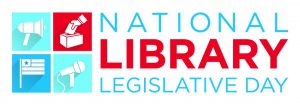 This morning, the ALA Washington Office is live streaming a few events taking place at National Library Legislative Day (NLLD).
This morning, the ALA Washington Office is live streaming a few events taking place at National Library Legislative Day (NLLD).
Viewable on the ALA Youtube channel, the live stream will feature keynote speaker Hina Shamsi, director of the ACLU National Security Project, starting at 9:00 am eastern. She will be followed by the Washington Office staff, who will provide a briefing on current legislation and review how it could impact your libraries and the communities they serve.
The focus of #NLLD17 this year will be federal library funding, and we will be specifically asking Congress to:
- House: Save IMLS; Fully Fund the Library Services and Technology Act (LSTA) and the Innovative Approaches to Literacy (IAL) program
- Senate: Sign the LSTA & IAL “Dear Appropriator” Letters
- House and Senate: Reauthorize the Museum and Library Services Act (incl. LSTA)
NCompass Live: LMNOP: The Evolution of Engagement
 Join us for the next NCompass Live, ‘LMNOP: The Evolution of Engagement’, on Wednesday, April 19, 10:00am – 11:00am CT.
Join us for the next NCompass Live, ‘LMNOP: The Evolution of Engagement’, on Wednesday, April 19, 10:00am – 11:00am CT.
Learn how Lincoln City Libraries’ Library Mom’s Night Out Program became a Library Makers Night Out Program by listening to what our patrons and community wanted. Attendees will also learn that a maker space does not require a 3-D printer or other technology in designated space.
Presenters: Jodene Glaesemann, Vicki Clarke, LeeAnn Harvey, Lincoln City Libraries.
Upcoming NCompass Live events:
- April 26 – Collecting Library User Feedback: Free! high tech and low tech options that will meet your needs
- May 3 – UNL Extension – The Learning Child – Co-Parenting for Successful Kids
- May 17 – Binge Boxes, Boovie Bags, Book box binge, Makerspace Kits and more
- May 24 – Ad Filters -The Case For and Against Installation on Public Computers
For more information, to register for NCompass Live, or to listen to recordings of past events, go to the NCompass Live webpage.
NCompass Live is broadcast live every Wednesday from 10am – 11am Central Time. Convert to your time zone on the Official U.S. Time website. The show is presented online using the GoToWebinar online meeting service. Before you attend a session, please see the NLC Online Sessions webpage for detailed information about GoToWebinar, including system requirements, firewall permissions, and equipment requirements for computer speakers and microphones.
Posted in Education & Training, Programming, Technology
Leave a comment
NCompass Live: Building a Digital Image Collection With Flickr: A low (or no) cost way to share your digital assets
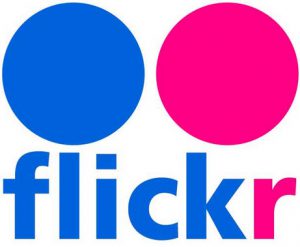 Join us for the next NCompass Live, ‘Building a Digital Image Collection With Flickr: A low (or no) cost way to share your digital assets’, on Wednesday, April 12, 10:00am – 11:00am CT.
Join us for the next NCompass Live, ‘Building a Digital Image Collection With Flickr: A low (or no) cost way to share your digital assets’, on Wednesday, April 12, 10:00am – 11:00am CT.
Libraries have many options of services to store and share digital assets, including many from library automation vendors. Instead of looking at library vendors, one option is to use a photo sharing resource such as Flickr (from yahoo.com). From a very active Flickr user, this presentation will showcase how you can use this free resource to promote, organize and share your digital assets. Of particular note is using Flickr groups and tagging to make items from your collection accessible and findable by community residents as well as people all over the world. The presentation will also explore how different libraries are using Flickr for collections and program-related images.
Presenter: Corey Seeman, Director, Kresge Library Services, University of Michigan.
Upcoming NCompass Live events:
- April 19 – LMNOP: The Evolution of Engagement
- April 26 – Collecting Library User Feedback: Free! high tech and low tech options that will meet your needs
- May 3 – UNL Extension – The Learning Child – Co-Parenting for Successful Kids
- May 17 – Binge Boxes, Boovie Bags, Book box binge, Makerspace Kits and more
- May 24 – Ad Filters -The Case For and Against Installation on Public Computers
For more information, to register for NCompass Live, or to listen to recordings of past events, go to the NCompass Live webpage.
NCompass Live is broadcast live every Wednesday from 10am – 11am Central Time. Convert to your time zone on the Official U.S. Time website. The show is presented online using the GoToWebinar online meeting service. Before you attend a session, please see the NLC Online Sessions webpage for detailed information about GoToWebinar, including system requirements, firewall permissions, and equipment requirements for computer speakers and microphones.
Posted in Education & Training, Preservation, Technology
Leave a comment
E-rate Program Webinars for Beginners
From USAC: Schools and Libraries Program Special Edition News Brief
For any libraries interested in E-rate, we strongly recommend that you attend these webinars to learn more about the program. These sessions will be useful to libraries who are new to E-rate and current E-rate libraries who just want a refresher on what E-rate is all about.
Webinars: E-rate Program Overview for Beginners
E-rate Program applicants are invited to participate in a webinar on the E-rate program and the application process for Funding Year 2017. These webinars are tailored for new E-rate applicants or anyone who needs a refresher on basic program information. During each webinar, the audience will have the opportunity to participate in a live question and answer session with members of the Schools and Libraries team.
Registration for these events is now open and available in the “Upcoming Events” section of the Schools and Libraries Trainings & Outreach page. Register for one or both webinars based on your training needs.
E-rate 101: Introduction to the E-rate Program
Wednesday, April 5, 2017, 12:00-1:00 PM CT
This webinar provides an overview of E-rate Program fundamentals, including key terms, timelines, processes, and the roles of USAC and the FCC. Learn who can apply for funding and what types of services are eligible as well as how to calculate your discounts and Category Two budgets. The presentation is a great option for first-time applicants and anyone who needs a refresher on the basics of the E-rate Program. Register Now!
E-rate Program Application Process
Thursday, April 6, 2017, 12:00-1:00 PM CT
This webinar provides a detailed overview of the E-rate Program Application Process. We will explain the purpose and process of filing each program form, including your options for invoicing. We will also provide guidance on the requirements for choosing a vendor and what to expect during Program Integrity Assurance (PIA) review. Last, we’ll cover the rules and importance of document retention. The presentation is intended for first-time applicants and anyone who needs a refresher on the basics of the E-rate Program Application Process. Register Now!
If you can’t attend the live presentations, register for the webinars and we’ll send you a link to the recording. The recordings will also be posted in the Online Learning Library.
Equipment and Set-Up
To participate, you’ll need:
- Minimum system requirements:
- Click the “FAQs and System Test” button on the event’s registration page.
- A computer or mobile device with an Internet connection.
- Computer speakers or headset.
Need Help?
If you have any questions about the webinar, please contact USAC Outreach at outreach@usac.org.
Audience members may submit questions anytime during the live event. If the presenters are unable to answer your questions, please call the Client Service Bureau at (888) 203-8100 or open a customer service case in EPC.
NASA@My Library
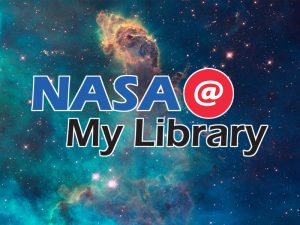 NASA@ My Library is a national Earth and Space Science initiative that connects NASA, public libraries, and their communities.
NASA@ My Library is a national Earth and Space Science initiative that connects NASA, public libraries, and their communities.
Applications are due today, Wednesday, March 22nd.
Public libraries are invited to apply for NASA@ My Library, a STEM education initiative that will increase and enhance STEM learning opportunities for library patrons throughout the nation, including geographic areas and populations currently underserved in STEM education.
Seventy-five U.S. public libraries will be selected through a competitive application process to become NASA@ My Library Partners and participate in the 18-month project (Phase 1), with the opportunity to extend for an additional two-year period (Phase 2). Applications will be accepted from Feb. 1 to March 22, 2017. For more information or to apply online, visit https://apply.ala.org/nasalibraries.
NCompass Live: Small and Rural Libraries Leading with TV Whitespace
 Join us for the next NCompass Live, ‘Small and Rural Libraries Leading with TV Whitespace’, on Wednesday, March 22, 10:00am – 11:00am CT.
Join us for the next NCompass Live, ‘Small and Rural Libraries Leading with TV Whitespace’, on Wednesday, March 22, 10:00am – 11:00am CT.
This presentation provides an opportunity for librarians working in small and rural library contexts to learn about the innovative applications of TV White Space (TVWS) technology in their communities. Join us to find out how small and rural libraries can implement this emerging technology and use it to collaborate with other community anchor institutions to advance access, inclusion, and crisis planning.
TVWS is an extremely valuable license-exempt radio spectrum located in the bands for traditional TV broadcast. The Federal Communications Commission (FCC) recently made a portion of these TVWS bands of spectrum available for free, open, and shared public use (similar to WiFi). TVWS, in conjunction with WiFi, allows libraries to extend their networks of internet access strategically across their communities.
Among our objectives are to build awareness of TVWS technology, describe how TVWS wireless networks operate, and help participants develop familiarity with several library TVWS case studies. We anticipate sharing how to plan for a new TVWS network and next steps participants might take. Also discussed will be a recent project, funded by the Institute of Museum and Library Services, which will give small and rural libraries the opportunity to apply to become a pilot site/early adopter of TVWS.
Presenters: Kristen Rebmann, Associate Professor, School of Information, San José (CA) State University, and Don Means, Gigabit Libraries Network.
Upcoming NCompass Live events:
- March 29 – Conversation Circles: A Simple ESL Program
- April 19 – LMNOP: The Evolution of Engagement
- April 26 – Collecting Library User Feedback: Free! high tech and low tech options that will meet your needs
For more information, to register for NCompass Live, or to listen to recordings of past events, go to the NCompass Live webpage.
NCompass Live is broadcast live every Wednesday from 10am – 11am Central Time. Convert to your time zone on the Official U.S. Time website. The show is presented online using the GoToWebinar online meeting service. Before you attend a session, please see the NLC Online Sessions webpage for detailed information about GoToWebinar, including system requirements, firewall permissions, and equipment requirements for computer speakers and microphones.
Posted in Books & Reading, Technology
Leave a comment
